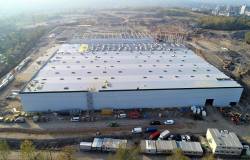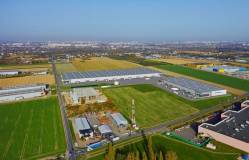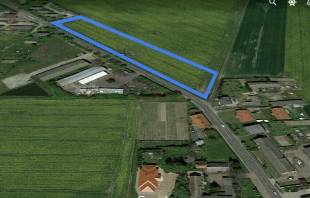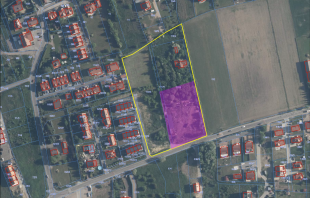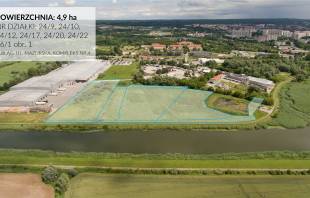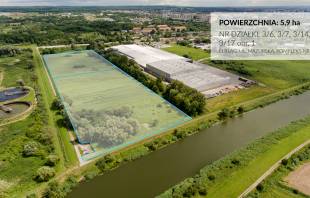Five top locations are dispersed throughout the CEE region. Each of them is in a different country, reflecting the recent expansion of the logistics sector in this area. Central Poland, including Łódź, is the most desirable location in Central and Eastern Europe. Just behind are Istanbul in Turkey, Prague in the Czech Republic, Bucharest in Romania, and Budapest in Hungary.
These conclusions form part of the report “The Development of Logistic Real Estate Networks in Europe”, developed by Prologis in collaboration with Eyefortransport (EFT), a world leader in the field of business consulting for the TSL market.
When comparing the results of this year’s study with the first ranking from 2013, the markets of Central and Eastern Europe recorded the biggest increase. Nine of the top ten markets in the region improved their results. A total of eight locations from CEE went to the top twenty in Europe, and three years ago, there were only four.
According to the respondents, the main factor for the popularity of Central and Eastern Europe are low costs. Markets in the region dominated the rankings in terms of such criteria as “labour costs” (in CEE there are eight out of ten most popular locations in Europe) or “costs of real estates” (thirteen out of twenty locations). Central Poland is the only location which was in the top ten in terms of both criteria.
The development of the markets in the CEE region takes place at the expense of the countries of Western Europe. The biggest drops in the rankings relate to Liege, Paris, Brussels, Madrid, and Central Germany. Distribution centres located in the vicinity of airports, including Frankfurt and Amsterdam-Schiphol, also lost their position. According to the report, this is due to the low results concerning the availability of workers and high labour costs.
The most desirable location in Europe is Venlo, which defended its first place achieved in 2013 and outclassed the remaining markets. Venlo received the highest marks in nine of 11 criteria relating to location, gaining significant advantage in terms of the availability of real estates, road connections, costs of transport, and formal and legal regulations.
The second place on the podium belonged to Rotterdam, an important port in the Western Netherlands. Just behind, i`1s the region of Antwerp/Brussels in Belgium and Central Brabant and Eastern Brabant in the Southern Netherlands. Behind the Benelux countries, in the top ten locations were Düsseldorf, Central Poland, Antwerp/Hasselt, Istanbul and Cologne.
The report “The Development of Logistic Real Estate Networks” presents the most important issues related to the location, with which owners and tenants of logistic real estate must deal in times of massive structural changes. The reorganisation of the European supply chain and dynamic development of e-commerce mean that across the continent there is a significant potential demand for modern and effective distribution objects.
216 tenants of logistic real estates from a variety of sectors – from retail, through automotive sector and pharmaceutical sector – rated 100 locations through the prism of 11 key criteria. The tenants assessed the proximity of main economic centres, low costs (of transport and real estates), as well as the availability of skilled workers.
The results indicate that the access to the workforce will be the most important factor for determining the location. The importance of this parameter significantly varies depending on the country and region in which the respondents carry out their activities. It plays the key role in the north-western part of the continent and in the United Kingdom, and the limited role at the peripheries of Europe. However, finding skilled and experienced workers remains a challenge in all of Europe.
Considerations such as international trade, outsourcing, and infrastructure expansions seems to stimulate changes more than cyclic factors, for example economic development or current consumption. In comparison with the 2013 study, two categories, which seemed relatively unimportant at that time, gained on relevance: sustainable development and planning for e-commerce. Sustainable development has become particularly important for brand-conscious customers, for example retail companies and distributors of consumer packaged products (CPG). When it comes to e-commerce, in recent years there has been its rapid development and it is predicted that it will grow in the future.
– The report is important because it helps us to discover current and future expectations of our clients – said Paweł Sapek, senior vice president and country manager at Prologis Poland.
– Logistics companies continually optimize their distribution strategies in order to provide services at the highest level, while maintaining the lowest costs. The European market is driven by long-term trends, such as the proximity of business centres, access to skilled workers, and consolidation. Most benefits will be gained by logistic corridors and so-called “sealing” (infill) locations, located in the largest urban areas in Europe. The results of this study confirm that we realize an optimal investment strategy, locating our distribution centres exactly where our customers expect them to be. Current and planned projects in Central and Eastern Europe, including Poland, show that Prologis is ready to meet the demand in the most desired locations in the region.
Prologis Park Budapest

















